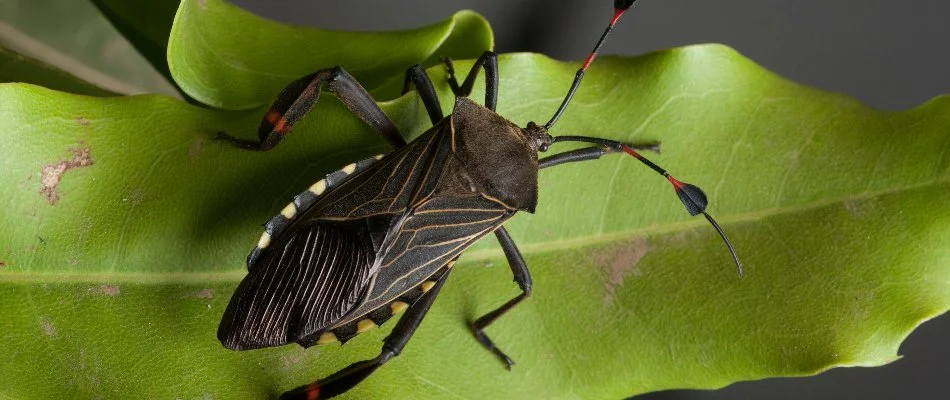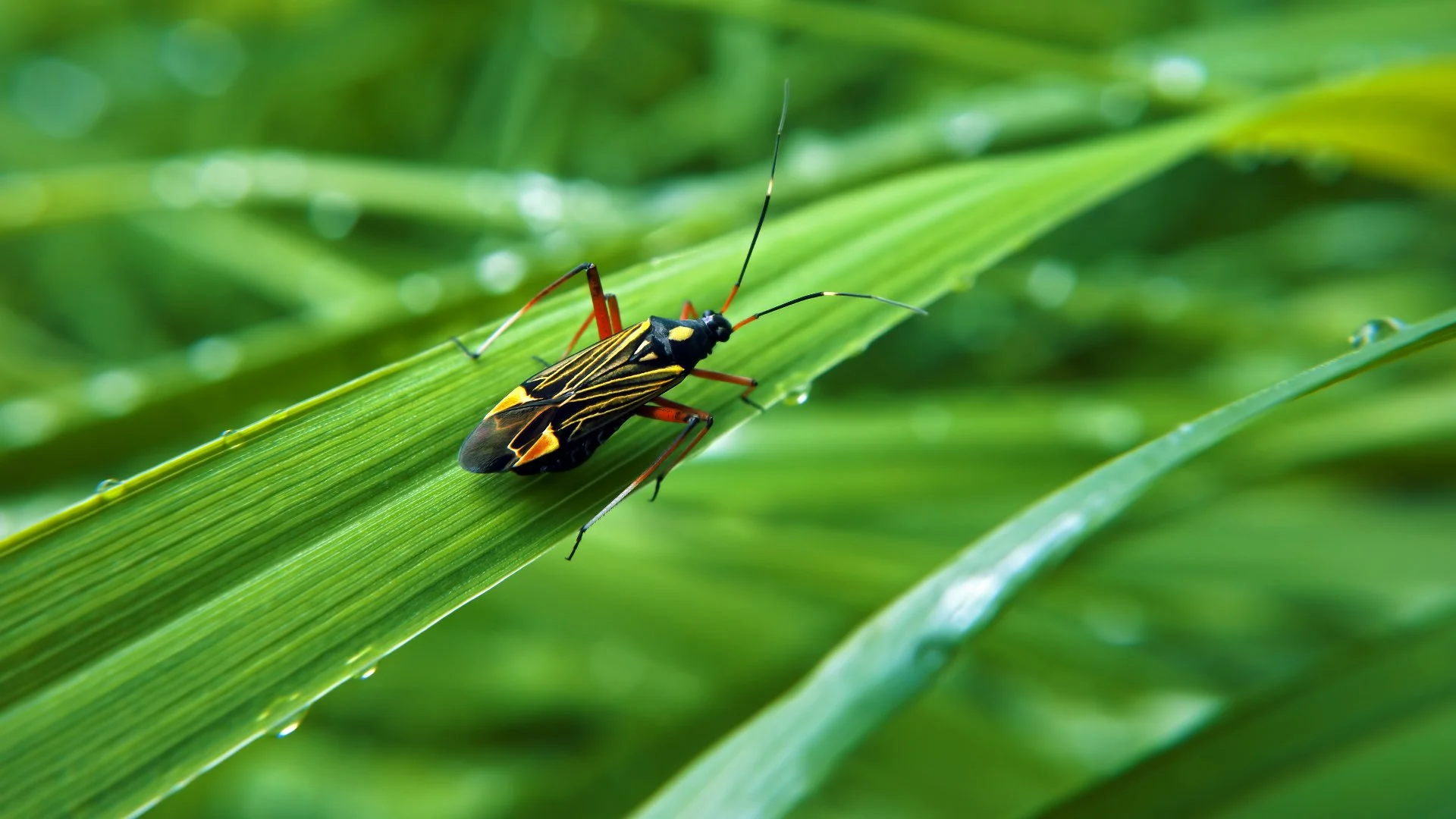Chinch bugs are one of the worst enemies of your lawn in Colorado. These lawn pests are extremely small, with oval-shaped bodies that start with a bright red color and become darker as they mature. Chinch bugs have piercing mouthparts used to suck fluid from your grass and inject a toxin into it. This dries up your lawn and causes patches of brown grass throughout. They prefer warm conditions, which is why chinch bugs are most active during the summer months. If these damaging pests infest your lawn, the first thing you need to do is contact professionals and schedule curative treatments to eliminate the infestation. It's also best to invest in fertilization treatments to help your grass recover!
What are chinch bugs, and what damage can they cause?

Chinch bugs are tiny lawn pests that can damage your lawn without being easily detected! These pests have oval-shaped bodies whose color changes throughout their life cycle. After hatching, young chinch bugs have a bright orange color that darkens into black as they reach adulthood. No matter the stage in their life, all chinch bugs have piercing mouthparts that they use to inflict harm on your grass.
Using these piercing mouthparts, chinch bugs draw out fluid from the grass blades while injecting a toxin that affects water movement within your turf. Because of this, chinch bug damage looks like drought stress. There will be patches of brown grass all over your yard that are dry and wilting. If your lawn is indeed suffering from drought or dehydration, it will easily respond to water. However, if you're consistent with your watering schedule and it still looks lackluster, it might be infested with chinch bugs. You'll also notice that there are more discolored spots of grass near driveways, patios, and walkways because the extra warmth in these areas will attract chinch bugs.
When are chinch bugs most active?
Chinch bugs are most active during the summer months. They love sunny weather when conditions are hot and dry, so you might notice their damage around July to August. Your lawn is under stress already during this season, as it spends most of its energy withstanding the summer heat. Make sure it receives enough hydration during the summer so it is better equipped to fight off these pests.
What should you do if chinch bugs infest your lawn?
If your lawn is showing signs of a chinch bug infestation, the best course of action is to contact lawn care professionals and schedule curative treatments to eliminate the pests. Professionals will check your lawn thoroughly to confirm the infestation and apply an effective treatment that will drive away the chinch bugs. The treatment will stop these lawn pests in their tracks and keep them from causing more damage to your turf.
You'll also want to invest in lawn fertilization treatments to strengthen your chinch bug-damaged lawn and help it recover. These treatments provide essential nutrients that will bolster the health of your grass and fortify its root system. Regular lawn fertilizer treatments are also a great way to build up your lawn's resistance to chinch bugs in the future!
Give us a call today to sign up for our lawn insect control service!
Chinch bugs can cause serious damage to your lawn, especially when left to their own devices. If your lawn has been infested by chinch bugs, we'll help get rid of them! Our team at Mesa Turf Masters offers a lawn insect control service to property owners in Grand Junction, Fruita, Palisade, CO, and neighboring areas. This service provides curative treatments that are effective against chinch bugs, billbugs, grubs, sod webworms, and more. We also offer this service as an add-on to our lawn care programs so your lawn receives complete care and defense against stressors. Call us today at (970) 434-5440 to schedule our lawn insect control service as part of any of our lawn care programs.



Comments (0)
Thanks for your comment!
Thanks for your feedback! Your comments have been successfully submitted! Please note, all comments require admin approval prior to display.
Error submitting comment!
There is a problem with your comment, please see below and try again.